
views
Evaluating Your Dessert Choices
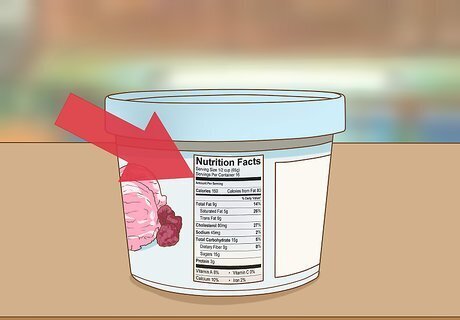
Read nutrition labels. If you are shopping for a dessert at the grocery store, give yourself some extra time to look over the label details. Pay attention to the number of calories listed towards the top of each label. Then, see how many of these calories come directly from fat. You want to find a dessert with low calories that also contains a low amount of fat. Make sure to only compare similar dessert items to one another. Otherwise, you may make a false comparison due to differing serving sizes. For example, it is a good idea to compare various ice creams, but putting these numbers up against a muffin’s food label may not provide a clear picture.
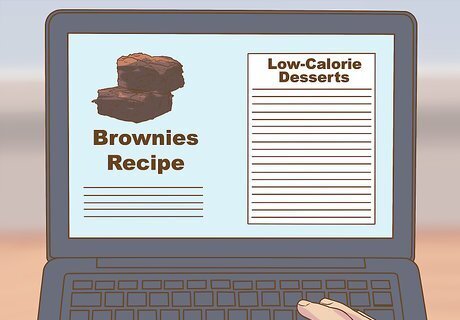
Look for healthy recipes online. Open your browser and search for “low-calorie desserts.” You will find a ton of websites listing off easy-to-make, or even gourmet, recipes. Go through these recipes and save the ones that interest you. You can then make them yourself, or order something similar when eating out. For example, if you are a fan of brownies, you can learn how to make them the lower-calorie way using sunflower oil and sugar substitutes. Or, you can make a layered carrot cake using reduced-fat cream cheese and a reduced amount of oil, sugar, and butter.
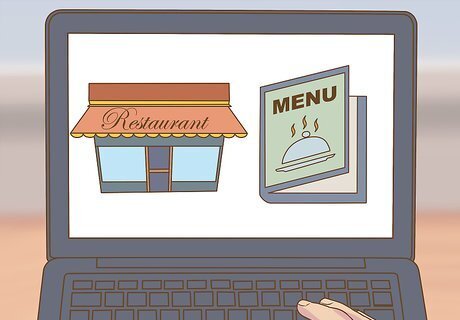
Look at the menu in advance. If you are going out to eat, hop online and see if you can view the menu. Pay particular attention to their dessert offerings. Making a dessert choice in advance will help you to avoid getting a high-calorie “impulse buy.” You can also scope out how certain desserts could be modified to suit your preferences, such as requesting that the whipped cream be left off or more fruits be added. Some restaurants may list how many calories each dessert contains. This information may appear on the dessert menu or on a separate nutritional flyer.

Talk with your server. If you are eating out, don’t be afraid to ask your server questions and to see if they can make certain healthy substitutions or changes to the dessert offerings for you. You might tell them that you are trying to keep your calories low, but would still like a dessert. Ask them what your best option would be. For example, you might say, “I’m currently trying to reduce my calorie intake. Is there a healthy dessert that appears on the menu or could be special ordered?” If you cannot find out the ingredients or nutrition information, you may have to judge based on what the menu states. Try to choose a dessert that contains fruit, and avoid choices that have cream, whipped topping, icing, or candy.
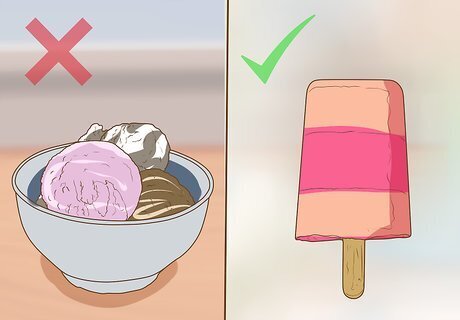
Eat a look-alike dessert. If you are craving a high-calorie sweet, try to satisfy this feeling with a doppelganger dessert. You want something that has a similar texture and flavor to the high-calorie alternative. If you want ice cream, you could try out a low-calorie version. You could also get sorbet or an ice pop instead. Some people find that dessert-flavored yogurts are a great way to fight off cravings while indulging in a familiar taste.
Selecting Desserts with Healthy Ingredients
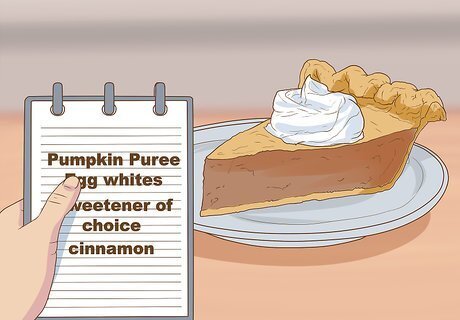
Choose a dessert with few ingredients. Low-calorie desserts often contain a streamlined ingredients list. The limited list also makes it easier to calculate the calories per portion. Look for a recipe that has a limited amount of butter, sugar, salt, and other refined starches as well. For example, try out a pumpkin pie with only four ingredients: pumpkin puree, egg whites, a sweetener of choice, and cinnamon.
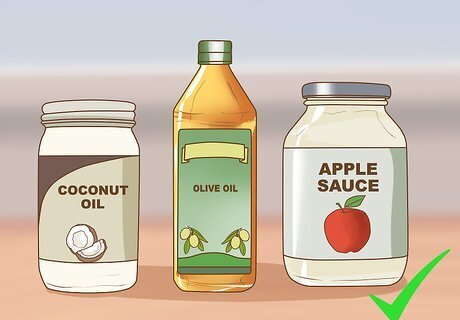
Go with butter substitutes. Butter can quickly add to the number of calories that you consume. It is also not that good for the body. Look for baked goods that contain butter alternatives, such as apple sauce, prune puree, or flax meal. If you are cooking, try to cut the amount of butter in half at least.
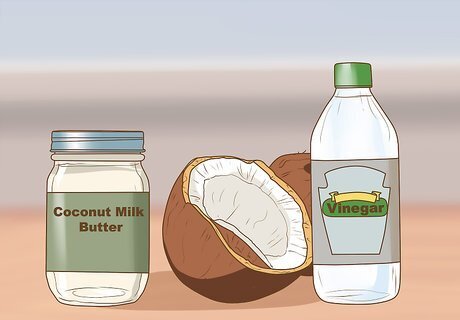
Look for dairy milk substitutes. Full-fat milk, heavy whipping cream, half-and-half, and buttermilk can add a number of calories to your dessert dishes. Try to choose desserts that use non-dairy alternatives, such as coconut milk mixed with vinegar or lemon. You may be able to replace cream or half-and-half with whole or 2% milk instead. This will cut down on the number of calories in the recipe.

Look for a Greek yogurt substitution. Greek yogurt is a great low-calorie dessert ingredient. Chocolate desserts, in particular, can benefit from both the taste and texture of added yogurt. When you are baking, see if you can use yogurt as a sweetener. You can also ask restaurants if they offer a yogurt-based dessert, as it will often be lower in calories.
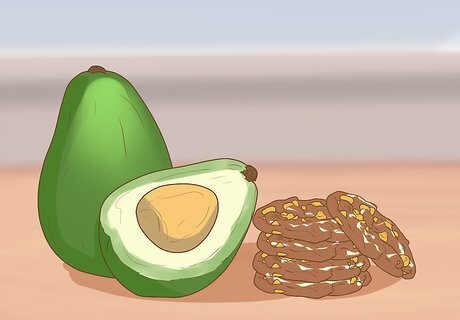
Select desserts with secret veggies. Some recipes that you make at home may actually contain vegetables as an ingredient. This is generally a good sign that it will be low in calories and high in healthy fiber. You usually cannot taste the veggies and the may not affect the texture either. For example, you can mix avocado or zucchini into chocolate chip cookies. Some bakers also use carrot or beetroot juice for extra sweetness.

Pick something with spices. Chili powder is often an unexpected, but flavorful addition to low-calorie desserts. You may also see the more traditional cinnamon, cocoa powder, or vanilla. A well-spiced dessert can make-up for the absent calories by elevating the level of taste. For example, ancho chili and chocolate goat cheesecake popsicles are unusual and flavorful.
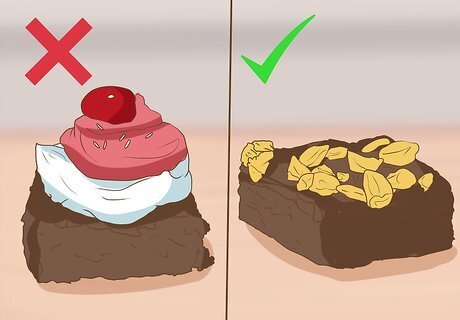
Select a low-fat or no whipped topping. Whipped cream and other sugary toppings add on tons of calories. If you are eating out, choose a low-calorie dessert and ask that the server leave off any toppings and sauces. If you are making the dessert, skip the toppings and instead make a fruit syrup or sprinkle a little bit of shredded coconut on top. For example, a peach-rhubarb crisp often comes with a whipped topping, but you can opt to place a dollop of Greek yogurt on top instead for fewer calories.
Managing Your Portions
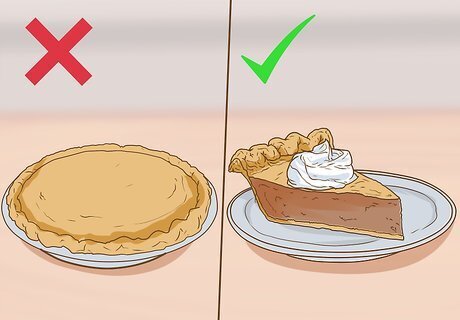
Stick to a single serving size. When you see a low-calorie dessert, it is very easy to reason out that it is okay to eat more rather than less. Instead, segment out one serving of the dessert and when you are finished with that portion, you are done. It might help to drink water as you eat to make the dessert last longer. Overeating low-calorie desserts can quickly increase the amount of calories, fat, and sugar that you are eating. This will negate the purpose of eating a low-calorie dessert in the first place.
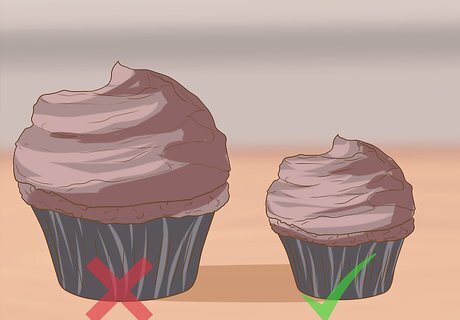
Eat mini-versions. Satisfy your desire to sample a variety of desserts by selecting bite-sized portions. Some desserts, such as mini cupcakes, make this easy as they naturally come in a low-calorie package. A skinny mini red velvet cupcake can contain just 150 calories. However, just make sure to limit the amount of dessert bites that you consume.
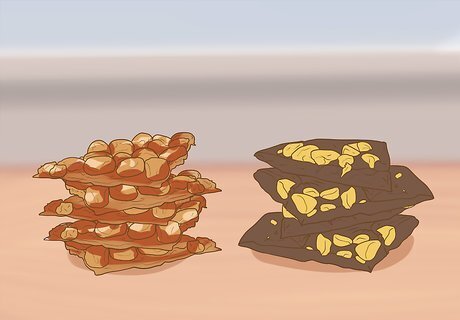
Try brittle or bark. This is a great option because you can break off a segment, thus limiting your total calories consumed. You can even continue to break down the bark, making you feel as if you are eating a series of small desserts. You can also make a low-calorie brittle or bark by using healthy mix-ins, such as poppy or sesame seeds. You can also do a dark chocolate bark with tart cherries mixed in. This gives you the benefit of the cherries’ and chocolate’s antioxidants. Small pieces of this bark average around 95 calories.
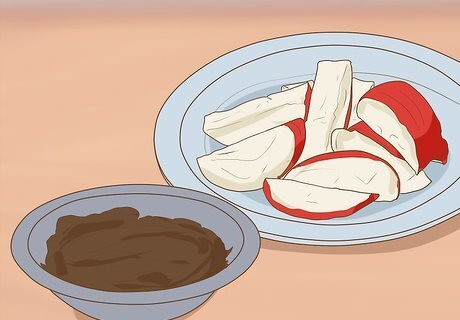
Eat a dip dessert. Slice or peel a few of your favorite fruits, such as apples and oranges. To maintain portion control, set aside two handfuls of slices. Get a container of Greek yogurt or dark chocolate for dipping. Then, dip and enjoy a low-calorie dessert or snack. You can also use biscotti or pretzels for dipping if you are in the mood for something less sweet and more salty.
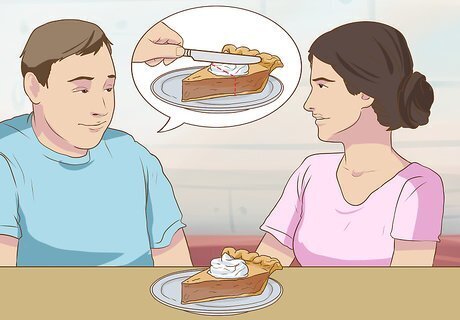
Split a dessert. This is a great way to save calories. Order a dessert off the menu, or make one at home, and then share it with someone else. You can even split one dessert between several people. This guarantees that you will not overeat and divides the calories so that you can indulge.
Follow the three bite rule. If you're unsure about the calorie content of a dessert or if you're craving a high calorie dessert, you can try following the three bite rule to prevent yourself from overindulging. You should only take three bites of the dessert before stopping. The idea is that the dessert will not taste as good after the third bite, so there is no reason to continue eating it. This rule will let you eat any dessert, as long as you can stop after three bites.
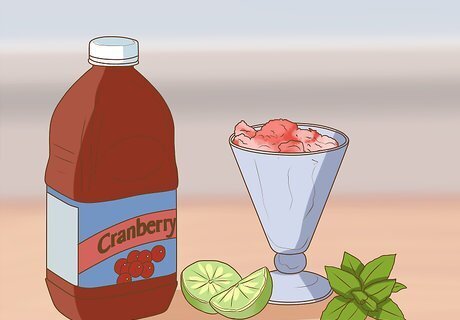
Drink something sweet. It can be dangerous to your health to drink your calories. But, if you do so purposefully, and use a drink as a dessert, then it can be a good option. To keep your portion size under control, limit yourself to one drink only too. For example, if you mix cranberry juice, mint, and lime over ice, it makes a light summer dessert drink.



















Comments
0 comment